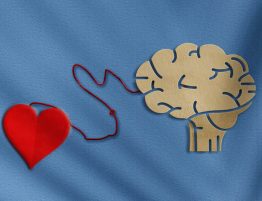
Nearly 1 in 4 adults worldwide has an abnormal buildup of fat in the liver, placing them at higher risk for heart disease, according to a new science report that encourages more screening for the condition.
Heart disease is the leading cause of death for people with non-alcoholic fatty liver disease, or NAFLD, a condition that also can lead to permanent liver damage, according to the American Heart Association scientific statement published Thursday in the journal Arteriosclerosis, Thrombosis, and Vascular Biology.
Although common, NAFLD is often hidden or missed in routine medical care, the statement’s writing chair, Dr. P. Barton Duell, said in a news release. He is a professor of medicine in the Division of Endocrinology, Diabetes and Clinical Nutrition at Oregon Health & Science University in Portland. “It is important to know about the condition and treat it early because it is a risk factor for chronic liver damage and cardiovascular disease.”
NAFLD is similar to a type of liver disease caused by alcohol consumption. Most people may not know they have it because doctors don’t routinely screen for it and it can develop without symptoms until it reaches an advanced stage, when liver damage occurs. Most patients do not advance to this stage, which includes complications such as liver cancer, cirrhosis, and inflammation and scarring of the liver, which is a condition called non-alcoholic steatohepatitis.
NAFLD shares many of the same risk factors for heart disease: high triglyceride levels, excess abdominal fat and obesity, high blood pressure, Type 2 diabetes and prediabetes. However, people with NAFLD are at an even higher risk for heart disease than people who have these risk factors and don’t have fatty liver disease.
The statement calls for better awareness of and monitoring for NAFLD, improved screening tools and treatments. It also highlights lifestyle behaviors that can help prevent it, such as keeping Type 2 diabetes and triglyceride levels under control.
“Part of the good news about managing NAFLD is that healthy eating, regular exercise and weight loss or avoiding weight gain are all valuable interventions to improve health in most of us, regardless of whether we have NAFLD,” said Duell.
The statement encourages people at risk for NAFLD to consult a dietitian for help maintaining healthy eating patterns, such as the Mediterranean diet that emphasizes fiber-rich vegetables and whole grains. Losing between 5%-10% of body weight can greatly reduce the risk. Exercising 20-30 minutes per day also can help, even if no weight is lost. Alcohol consumption is discouraged for people with NAFLD because even small amounts can aggravate the condition and interfere with the liver’s ability to heal.
However, genetics also play a role, and a healthy lifestyle cannot always prevent the condition.
At the other end of the spectrum, Duell said, “some individuals may have a genetic makeup that protects them from developing NAFLD despite having obesity, Type 2 diabetes, metabolic syndrome, unhealthy dietary habits or being sedentary.”
NAFLD can be detected with a specialized ultrasound test that measures liver elasticity, fat and stiffness in the liver, a result of scarring. A more invasive and more expensive liver biopsy is the definitive test used to detect more advanced stages of the condition.
“The lack of awareness of the high prevalence of NAFLD contributes to underdiagnosis,” said Duell. “Individuals with risk factors for NAFLD warrant more careful screening.”
If you have questions or comments about this story, please email editor@heart.org.






